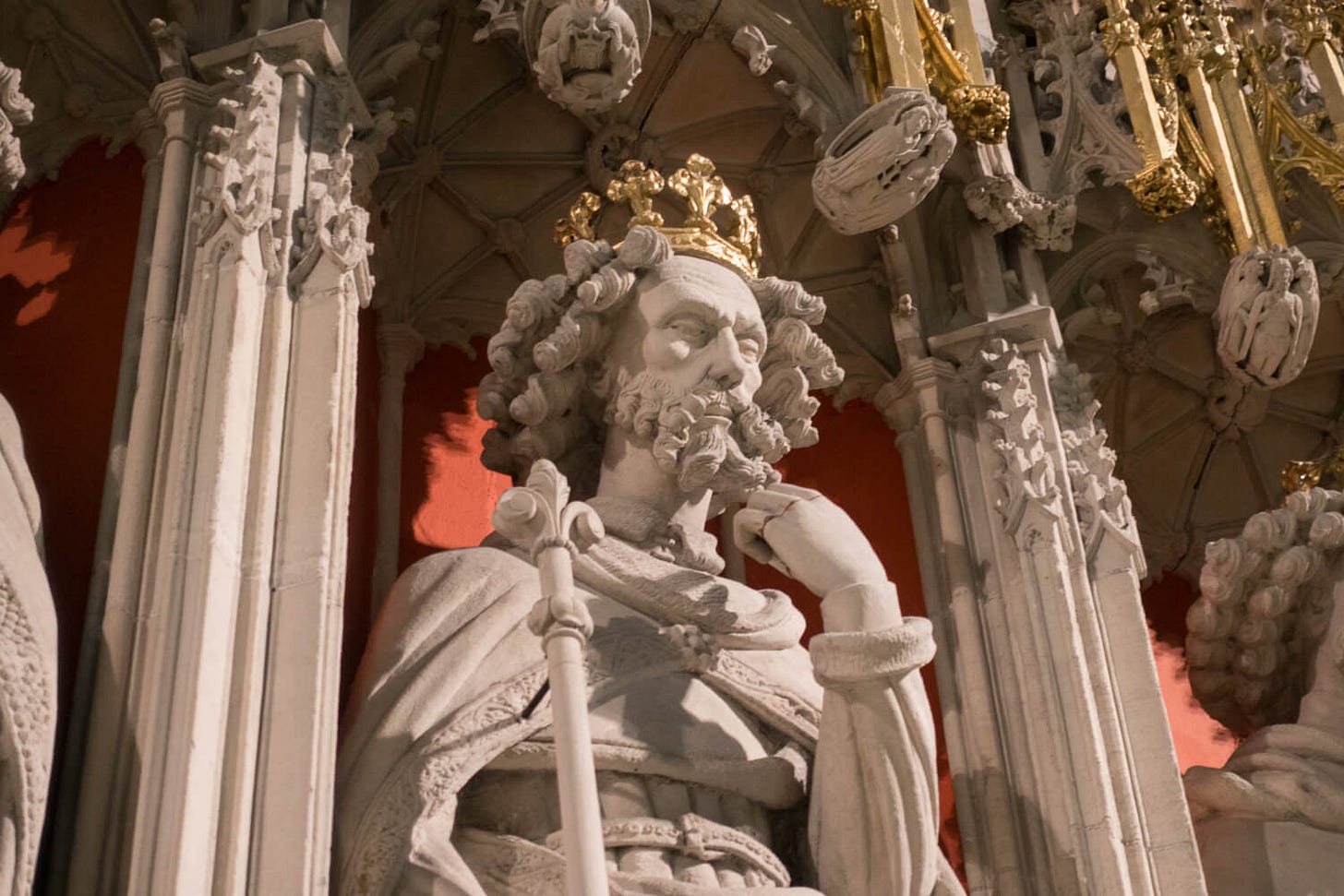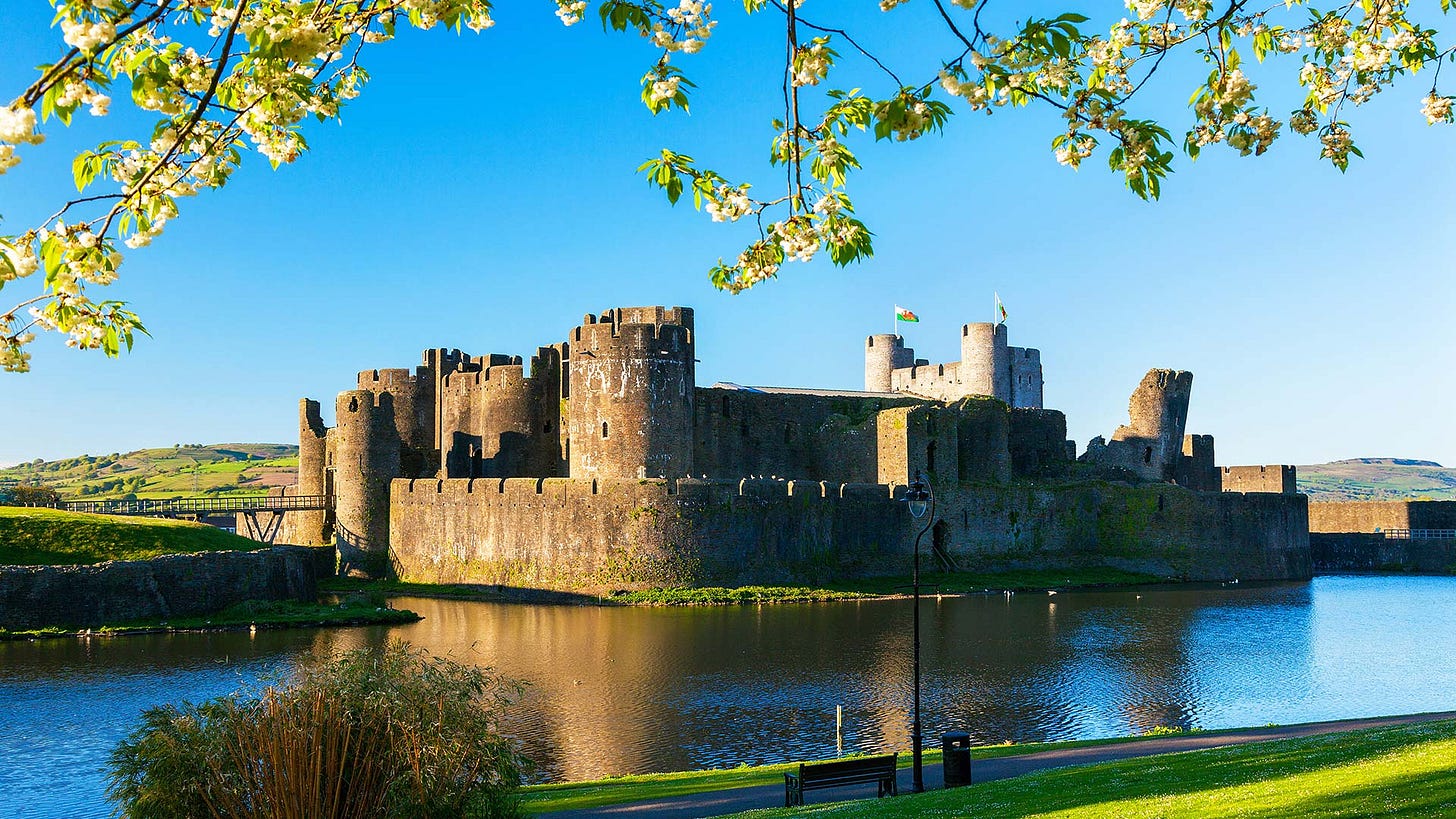Edward II’s Odd Sword Collection
Edward II from the choir screen of York Minister
Happy Feast of St Matthew the Apostle to everyone! And to those of you who are non-Catholics, but still interested in history, you might be interested to know that today also marks the anniversary of the murder of King Edward II of England (r. 1307-27) in Berkeley castle in Gloucestershire. Though of course, saying Edward was murdered is controversial in this day and age. There are a few scholars who I respect that claim the king survived Berkeley eventually to wander Europe in the 1330s. I have to admit, I come down on the side of those who believe the king was murdered, though I readily concede to the other side that they raise interesting questions that sometimes elude definitive answer by those of us who subscribe to the traditional narrative.
However, I will not be delving into the controversy surrounding Edward II’s death today. Instead, I offer a short post on something that caught my eye as I was reading a source from his reign. As many no doubt know, Edward II was captured and forcibly deposed/abdicated from the throne in 1326-7. In the weeks leading up to his capture in November 1326, he was based at Caerphilly castle in South Wales, the massive fortress of his great favourite and partner in quite literal crime in the 1320s, Hugh Despenser the Younger. Even after both Edward and Despenser were captured, the loyal garrison of Caerphilly continued to hold out. The minority regime of the new king, Edward III (r. 1327-77), led by Edward II’s queen Isabella and her favourite, Roger Mortimer of Wigmore, placed the castle under siege from December 1326 to March 1327. Upon the castle’s eventual surrender, an inventory was made of the possessions Edward II and his fallen confederates had left behind at Caerphilly.[1] It is some of the interesting bits of that inventory I wish to turn to now.
Caerphilly castle in South Wales. They also have a working trebuchet or did once!
The particular thing that struck me was the sword collection accompanied by coats of arms. Anyone who knows me knows that I am a sucker for a good sword collection and for heraldry. For being quite an unmartial king (one of the reasons he fell from the throne), Edward had brought quite the stockpile of sword blades with him:
-One sword “garnished in the Scottish manner” (odd for a king repeatedly defeated by the Scots in battle or campaign).[2]
-Another sword “garnished with silver-gilt and enamelled with a pattern of oak branches.”
-Two more swords, silver again, but one “enamelled with the arms of England and France” (likely in reference to Edward’s marriage to Isabella of France), the other “enamelled with the arms of Spain.”
-And finally, “one sword with a scabbard of green velvet…and 2 scutcheons [shields] of the arms of Lancaster and Holand.”
It was the final entry which made me go “What the devil? Hold the phone, let me read that again.” Yep, sure enough, the arms of Lancaster and Holand.
For a link to what the swords in Edward’s collection may have looked like, see Sword - Sword - 1300-1350 | Collection Object | Royal Armouries
For those wanting to know why I was stunned, Edward II’s nemesis for most of his reign was Thomas of Lancaster, whom the king had finally captured and executed in 1322. And Holand is likely a reference to Sir Robert Holland, Lancaster’s chief knightly retainer, who had defected to Edward II in 1322 when Lancaster needed him most. So, what was the king doing with a sword displaying the arms of these two men?
My supposition at the moment is that this sword was once the possession of either Thomas of Lancaster or Sir Robert Holland themselves. We know that in the run up to Lancaster’s capture, two of his castles, Tutbury and Pontefract (the latter Lancaster’s HQ for most of the previous five years), were captured by the king. Perhaps the sword was found there and taken by Edward. Alternatively, after all of Lancaster’s lands were seized by the crown, Edward could have heard of the swords existence from the inventories made at the time and seized the prize for himself then.[3] Finally, perhaps the king purloined the sword from Sir Robert Holland and his party after the knight betrayed his lord and went over to the king at the eleventh hour. Any or none of these theories could be correct. I suspect one of them likely has to be true, however.
This is interesting as Edward II had no love for the memory of his fallen rival. When Thomas’ brother and heir, Henry, was restored to a portion of the Lancastrian inheritance in 1324, the king condemned him for using the same coat of arms as Thomas.[4] A bit rich, considering this sword in his possession. But that might be the point. Perhaps like many lords in medieval epics, fantasies, and fictions, Edward wanted to remind people of his triumph by utilizing this sword. That would accord with the actions of one or two tyrannical medieval kings in novels I have read. And Edward II was certainly proving more ‘tyrannical’ as the 1320s progressed. A symbolic way of proclaiming one’s mastery and vengeance perchance.
That, or I have made a mountain out of a mole hill (I would not be the first historian). Either way, it is an interesting thought to have on a day of remembrance for Edward II and his reign. He was certainly one of the worst kings to ever wear the crown of England. But he does make you think when you study his reign. And for that, I am personally grateful.
[1] Reproduced in W. Rees, Caerphilly Castle and its Place in the Annals of Glamorgan (Caerphilly, 1974), 109-21.
[2] All evidence relating to the swords is from Ree, Caerphilly Castle, 110.
[3] S. Phillips, Edward II (London and Yale, 2010), 406-8 and 416-7.
[4] Ibid, 474.




My question is, why do you have such disdain for Edward II? I would be very interested in your ranking of all the Medieval Kings from best to worst.